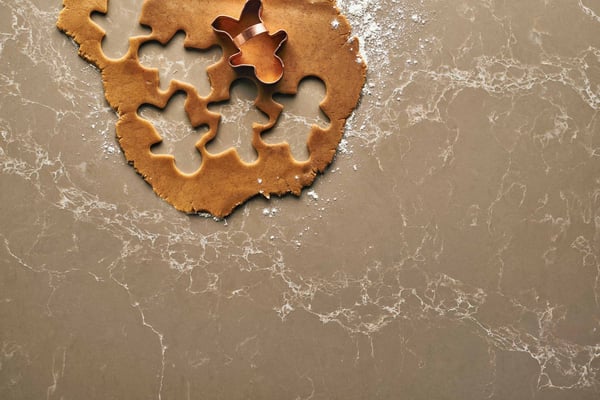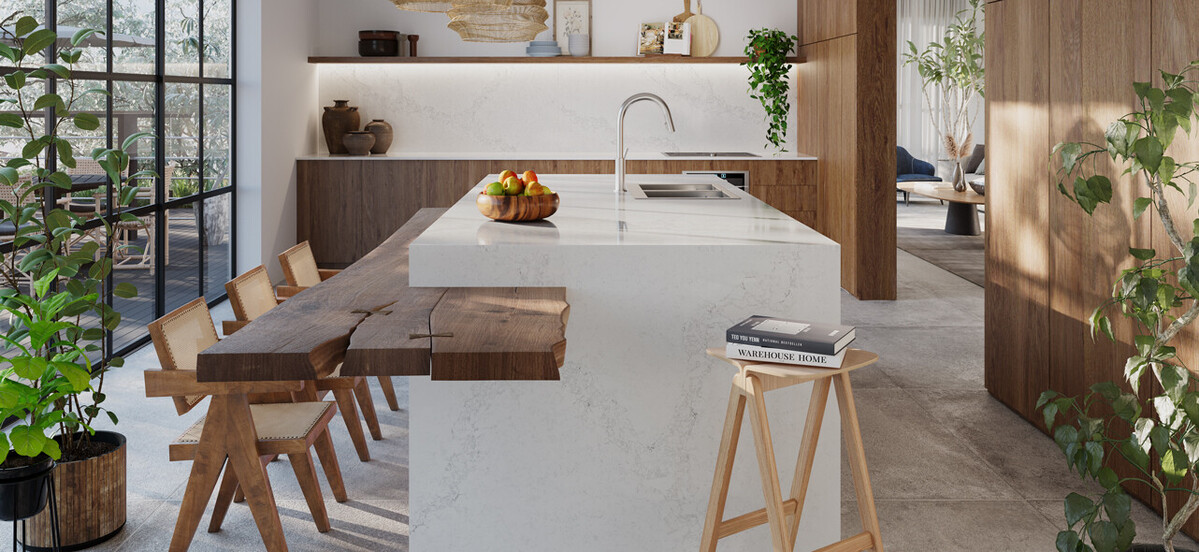
Quartz is one of nature's toughest mineral and has been used for applications such as jewellery and carvings since antiquity; it is only recently that quartz has been incorporated with other materials to form engineered stone worktops. Quartz worktops have soared in popularity over the last decade, though many people are still unsure of it's composition, features and availability. Here are some of our most frequently asked questions, relating both to quartz itself and Caesarstone specifically...
What is quartz made from?
Quartz is a mineral made up of silicon and oxygen atoms - known as one of nature’s strongest, most durable minerals. Our engineered quartz work surfaces contain approximately 90% natural quartz with the rest composed of organic polymers and pigments. Combined, the result is a very solid, granite-like surface with non-porous properties. It’s extremely resistant to hot and cold temperatures and impervious to stains, scratches and cracks.

How is quartz made?
Caesarstone quartz is made from a rigorous manufacturing process that utilises high-level automation alongside strict monitoring from highly skilled staff. Before the production begins, the raw materials are inspected and carefully selected and tested for quality.
These raw materials are then combined together to form a mixture, which is poured into moulds of slabs. A high pressure vacuum compresses and vibrates the substance to remove air and create a compressed surface. A curing kiln heats the product to 90°C for 45 minutes to maximise its strength and solidity.
Each slab is then individually gauged, calibrated and polished to perfection for a flawless finish, in both matte and gloss variants depending on the colour and style. There is then a meticulous quality check carried out by an expert, making sure that every single slab meets our extremely high standards of colour, hue and consistency. If they pass, they are then labelled, sorted and tagged before being put into our distribution system to reach the end customer.
Read more about the unique design process of Caesarstone quartz...
How is the stone cut?
Our surfaces can be fabricated into a number of shapes and layouts, with specific detailing that can provide both practical and aesthetic benefits. Depending on the individual kitchen layout, a single slab will be cut in the most resourceful way possible, utilising every inch of space for overhangs, under-mount sinks and upstands.
We want you to be able to create the kitchen of your dreams, whether that’s curved or shaped in a unique way – fabricators nationwide are available to cut the stone exactly how you imagine. It’s all in the detail, with a selection of edge finishes available to suit all styles of kitchen – from a pencil edge for contemporary continuity to a bevelled edge for classic, elegant curves.
Where can I come and view Caesarstone quartz?
One of the best ways to view Caesarstone quartz is to visit a kitchen retailer or fabricator. We have an accredited selection of suppliers – use our where to buy tool to find where your nearest retailer or fabricator is.
Another option is to visit our London Studio, which showcases our most popular products with impressive full-height slabs. Here, you’ll be able to examine the true depth and detail within each design and compare the intricate differences across styles. Find out more about our London Studio or why not take a virtual tour?
Where can I get a sample of Caesarstone quartz?
You can enquire about samples of Caesarstone quartz here. Before making a selection, we recommend that you first download the swatch book, which will allow you to see the full range of colours and styles.
Images Source: Caesarstone




